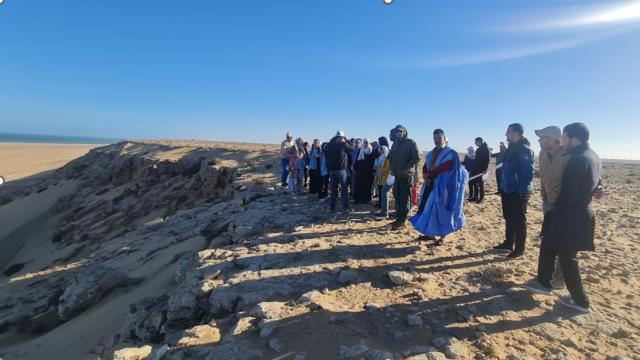
Building capacities of local NGOs and early-career biologists in the Central Moroccan Atlantic and Cap Blanc
Morocco is part of several bird migration routes between Europe and tropical Africa, providing key stopover sites for millions of birds. The southern coastline between Dakhla and Lagouira (Cap Blanc) is numerically one of the most important wintering sites for waders along the East Atlantic Flyway, supporting hundred-thousands of waders during the northern winter.
Wintering waders face many threats in the area, especially linked to climate change. Capacity building focused on local NGOs and local communities aims to safeguard the bird’s wetland habitats. In the past 6 years, the WSFI has supported several training events in the region. One of the greatest achievements of the past WFSI training was the strong participation of local Sahraoui civil societies in advocating to nominate new Ramsar sites. As a consequence, 3 wetlands were classified under the Ramsar Convention: Oued Assaquia Al Hamra À La'youne (Site number: 2382), Côte Aftissate-Boujdour (Site number: 2377) and Sebkhat Imlili (Site number: 2323).
In 2023, during the January total counts, the WSFI supported additional training events on the identification and monitoring of waterbirds and their wetland habitats with the aim to strengthen the ability of local NGOs, early-career conservationists, and students to play future roles in monitoring wetlands in their areas, resulting in a more reliable and affordable monitoring programme. In addition, waterbird censuses were carried out at eight different wetlands and 99,694 waterbirds were counted representing 133 species. Two exceptional findings were the sighting of a Northern Bald Ibis Geronticus eremita and the carcass of an African Crake Crex egregia. Concerns were raised about the numbers of Atlantic Puffins, Razorbills and other seabirds that were found dead or exhausted during the field trips.
For more information, please download the full project report.
